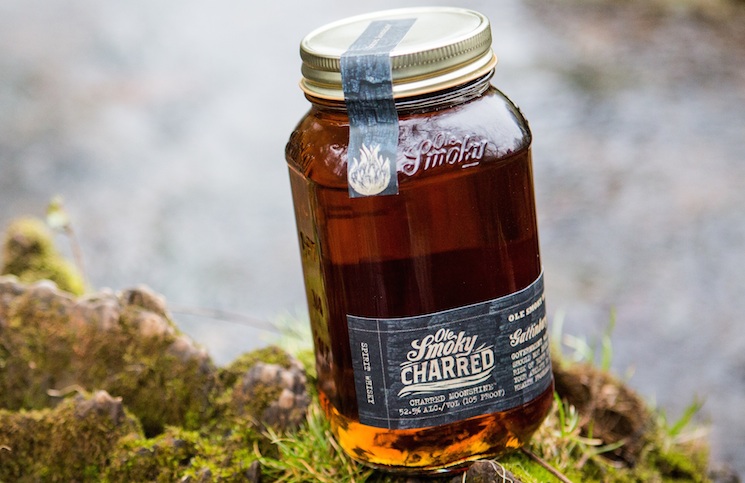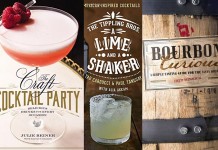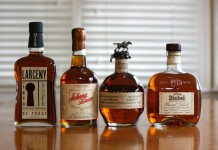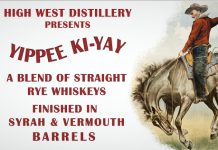
Ole Smoky Moonshine has been quite a success story. Started by a small group of college friends, Ole Smoky Moonshine has grown from a small, local Tennessee brand into a significant national brand with deals with major restaurant chains like Outback Steakhouse (which built an entire Moonshine BBQ menu around the brand). A major part of Ole Smoky’s success comes out of a very savvy move to create a branded experience and gift shop, called The Holler, in the middle of one of the busiest tourist spots in the United States: Gatlinburg, Tennessee. Gatlinburg, which sits right at the foot of the Great Smoky Mountains, sees over 2 million visitors a year. These massive tourism numbers help make Ole Smoky Moonshine one of the most visited “distilleries” in the US.
Ole Smoky’s The Holler is not only a brilliant branding play, giving the company a solid “good ol’ Tennessee” brand, it also accounts for a massive volume of sales of Ole Smoky Moonshine. Ole Smoky sells more bottles of moonshine through that little store than many small brands sell nationally. Although Ole Smoky Moonshine might seem like a little craft company, they aren’t. In 2013 they recruited CEO John Cochran, the guy behind PBR’s massive growth, and expanded their off site bottling facility to over 20,000 square feet.
It’s hard not to get sucked into Ole Smoky’s good ol’ boy story (we managed to); with Americana being so highly prized these days, it’s hard not to fall for the notion that all that moonshine is coming out of the little hand crafted distillery in Gatlinburg. Unfortunately, all evidence points to the contrary. While the tiny distillery at 903 Parkway in the heart of Gatlinburg provides a great branded experience, a majority of what Ole Smoky is doing happens off the main strip in Gatlinburg in their 20,000 square foot bottling facility. It doesn’t take a math expert to calculate the maximum volume that the tiny stills at The Holler can produce if they were to run 24/7 – not nearly enough to satiate the ever-growing demand for Ole Smoky Moonshine.
The most compelling evidence for the real Ole Smoky story comes from their label, which simply reads “Bottled by Ole Smoky Distillery, LLC.” The key word here is “bottled”. There’s absolutely nothing that says that Ole Smoky can’t use commercially bought neutral grain spirits to produce their products, and there is no indication that anything was actually distilled in Tennessee. We’ve asked Ole Smoky for a comment regarding the use of commercially purchased neutral spirits several times and were ultimately given a “no comment” in response.
Ole Smoky Charred Spirit Whiskey / Charred Moonshine (52.5% ABV / 105 proof, $39.95) – while the back story issue of Ole Smoky may be a little bit of a rat’s nest, ultimately it’s what’s in the glass that must be judged. Ole Smoky Charred is made from 100% Neutral Grain Spirits which have been aged in “toasted bourbon barrels for 3-4 months, and then blended for consistency.” Although it’s referred to as “Charred Moonshine” on the label, that’s a trademarked part of the brand – it’s actually a spirit whiskey (which is indicated on the side of the label). Light gold in color, Ole Smoky Charred is consistent with a spirit that has been in barrel for a short amount of time. The nose of Ole Smoky Charred is sweet corn, very much in line with Ole Smoky’s core moonshine product. The impact of the barrel is there, too, and the sweet corn is well complemented by caramel, vanilla, and oak. Even at this high proof, the nose manages to not be overly sharp and is still inviting.
The entry for Ole Smoky Charred is sweet cornmeal, again very much in line with Ole Smoky’s base Moonshine product. The impact of the barrel isn’t far behind with vanilla, caramel, black pepper, and oak spice. As with the nose, the entry doesn’t completely reflect the level of alcohol present in Charred. That all changes in the midpalate where the oak and black pepper spice intensify and we begin to get some real heat from the underlying spirit. The sweet corn notes from the opening are there as a counterpoint to the spice and heat, but ultimately they aren’t enough to really create balance. At the end of the midpalate, the heat takes over and there’s no doubt we’ve got high proof spirit in our mouth. With all this heat, it’s easy to miss the charred note that enters the fray. It’s really not all that apparent until the heat begins to subside on the finish. Here the charred wood note combines with the sweet corn to produce an out-of-the-blue black licorice note that lingers on the palate.
Ole Smoky Charred has a fairly nice mouthfeel to start, but as with the rest of the taste experience, that falls apart in the midpalate. The finish is fairly dry and a little hot, not nearly as pleasant as the opening. At this high proof, Ole Smoky Charred really isn’t designed to be enjoyed neat. Adding water helps soften some of the fire in the midpalate, but not in the finish. Ole Smoky Charred seems to do much better with ice, which enhances the sweeter qualities and greatly softens the harsher ones.
While we have no problem with the spirit whiskey category (even Absolut Vodka has been experimenting with it), it’s hard to justify spending $40 a bottle for neutral grain spirits aged for 3-4 months. To put it in perspective, for one 750ml bottle of Ole Smoky Charred, you can buy 1.75L of Wild Turkey 101 (aged as much as 24x longer). Tasting the two side by side, there’s absolutely no comparison: Wild Turkey wins hands down. It’s not even close. But the issue here isn’t just equivalent value. Ole Smoky has done a fine job of extending their core brand image and taste profile to a lightly aged product, but doing so also opens them up to further examination. Spirit consumers and enthusiasts are much more laissez faire about the source and origins of their Moonshine but much more demanding about their whiskey. With brown spirits, especially American whiskey exploding, it makes perfect sense why non-whiskey companies would want to find their way to the aged whiskey game. The problem is, Ole Smoky got greedy. Had they kept this product closer to the $20 price point, I think they’d be fine, but at $40 they’re not going to get the response they might expect.
















